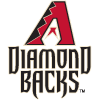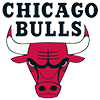What we are seeing from these top aces is not so much a departure from previously established levels as a peak of already-elite performance, but just a short trek down the list reveals a set of pitchers who find themselves in unfamiliar territory. So what changed to allow these players to convert from fantasy nobodies to some of the most sought-after arms in baseball, and will those gains hold for the foreseeable future? Let's investigate.
RISERS
Robby Ray
| K% | IP | K | |
| 2016 | 28.3 | 145.0 | 181 |
| 2015 | 21.8 | 127.2 | 119 |
What we are seeing from these top aces is not so much a departure from previously established levels as a peak of already-elite performance, but just a short trek down the list reveals a set of pitchers who find themselves in unfamiliar territory. So what changed to allow these players to convert from fantasy nobodies to some of the most sought-after arms in baseball, and will those gains hold for the foreseeable future? Let's investigate.
RISERS
Robby Ray
| K% | IP | K | |
| 2016 | 28.3 | 145.0 | 181 |
| 2015 | 21.8 | 127.2 | 119 |
The strikeouts have especially exploded just recently. He failed to record double-digit strikeouts in any of his first 19 starts of the season, but after punching out 13 Padres on Aug. 20, Ray had cleared the milestone three times in his previous seven starts. He owns a Fern-like K rate of 34.7 percent over that stretch, with 59 whiffs over 40.2 innings. A hard-thrower, Ray averages 95 mph on his fastball, but perhaps more telling is the upward trajectory of his pitch velocity throughout the season.
For his first 19 turns this year, Ray averaged a legit 94.7 mph on his fastball (weighted average, two-seam and four-seam, calculated using data from Brooks Baseball), but over his seven starts of strikeout-filled greatness, Ray has averaged 95.9 mph on his heat. Many pitchers have radar-gun readings that heat up with the temperature of summer, but Ray has posted his six highest single-game velocities this season over his last six starts, suggesting that what we are seeing now is an incendiary version of what we have come to know over the last couple seasons. The majority of his strikeouts come via the fastball, and over the last seven games, 28.8 percent of the at-bats that ended on a fastball were of the strikeout orientation - that number was 23.6 percent over his first 19 starts.
The question of whether this performance is sustainable for Ray over the long haul boils down to his ability to carry the late-season velocity gains of 2016 into next season, and another slow speed increase (like we saw this season) could result in disappointing strikeout numbers for the first half of '17 if it takes him time to build to full strength.
| K% | IP | K | |
| 2016 | 25.7 | 125.2 | 128 |
| 2015 | 16.2 | 128.1 | 90 |
Duffy has been an equal-opportunity strikeout artist this season, utilizing his fastball, slider and changeup to get more than 35 strikeouts apiece this season (combined starting and relief), and the spread has become more even since he moved to the rotation (his fastballs were more dominant in the K department as a reliever). He ditches the changeup against fellow lefties, using both the fastball and the slider to get his whiffs, but anything goes when Duffy has the platoon disadvantage.
Looking at just his games as a starter and contrasting his past two seasons, Duffy relied very heavily on the fastball to get his strikeouts, followed by a half-count with the slider and just a handful of strikeouts on the change. Using the stuff data on Brooks and comparing just his starts from 2015 and 2016, the first thing that pops is that Duffy is throwing more than a tick harder than he was last year, with a weighted average fastball of 95.3 mph this season. He's throwing the sinker twice as often and with 0.7 mph more gas than he threw his four-seamers last season. The extra velocity gives opposing batters less time to identify the incoming pitch, and his other pitches are playing up, a combination that underscores his greatest gain: pitch command. Duffy is putting all three pitches where he wants to, and those pitches have more action, solidifying the legitimacy of his strikeout gains.
| K% | IP | K | |
| 2016 | 26.5 | 188.0 | 198 |
| 2015 | 21.1 | 133.1 | 113 |
Verlander's K rate has jumped 5.4 percentage points since last season and is nearly nine points above the career-low 17.8-percent mark that he posted in 2014. Whether looking at his K percentage or his K rate per-inning, Verlander is enjoying the second best season of his career in terms of strikeout rate, trailing only a 2009 season in which he finished third in the AL Cy Young Award voting.
The right-hander is throwing a bit harder this season, rebounding from last season's career-low 93.4 mph following a five-year progression of declining velocity. He has added 0.7 ticks to his average heater when compared to the past two seasons, but it still falls short of his average fastball from 2013 or any season prior. Sure enough, his fastball has been a much more potent strikeout weapon this season, but to be honest, his improvement stretches across his arsenal and is not isolated to the fastball. He has added a cutter this season, but it's a two-percent pitch that is negligible when looking at the big picture of his season.
Watching him pitch, everything looks stronger. The curveball looks sharper, and though it lacks the insane movement of its 70-grade peak, Verlander has shown the ability to bury both of his breaking pitches at will, utilizing both the curve and slider as effective two-strike pitches, giving him a weapon no matter the handedness of the batter. Most importantly, his pitch command has been excellent, allowing all of the clubs in his bag to play up. His walk rate is a match for last season, but walks aren't the best proxy for pitch command, as all pitchers throw strikes that completely miss the target.
From a mechanical standpoint, Big V was tough to watch for the past couple of seasons. It looked as if there was an invisible wall running along his right side during the delivery, and Verlander would slightly veer away from that invisible wall just as a car would give distance to a median barrier on the freeway. The mis-angled delivery would snowball into release point, wreaking havoc on pitch command and tarnishing his release point. I don't see the invisible wall this year, as Verlander carves an efficient line to the plate and stays on-line to his target. He has a fluid rhythm of momentum that has ironed out the wrinkles of his timing, and Verlander is discovering just how far he can go with superior command of (relatively) inferior stuff.


























